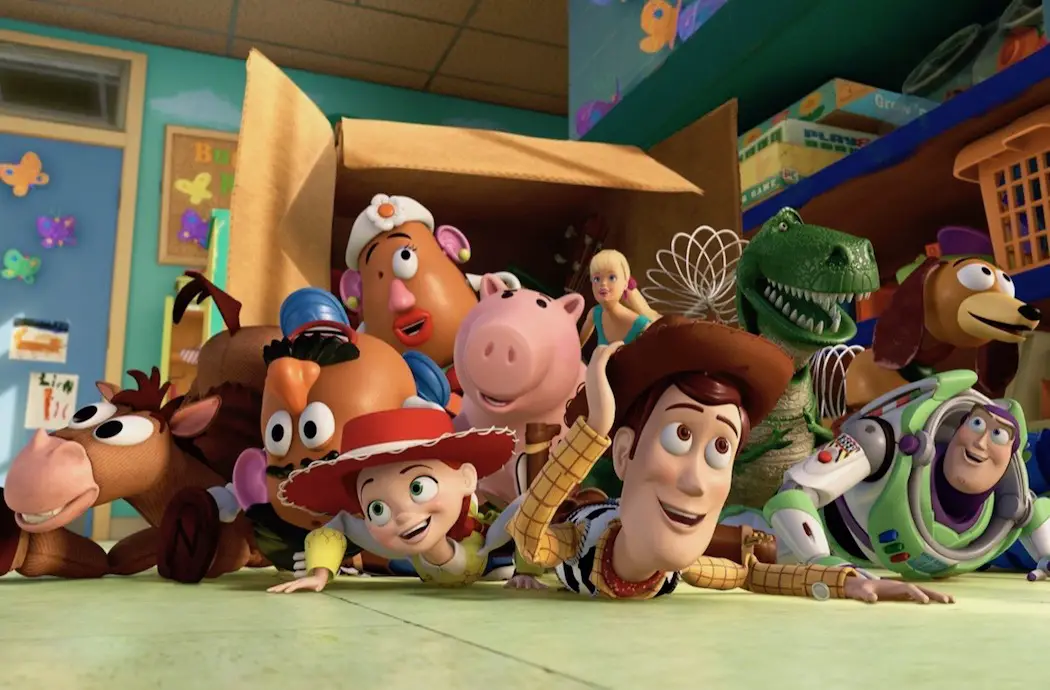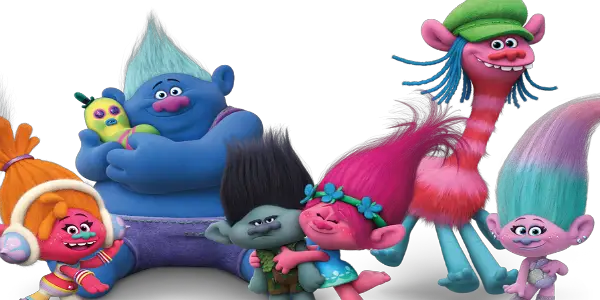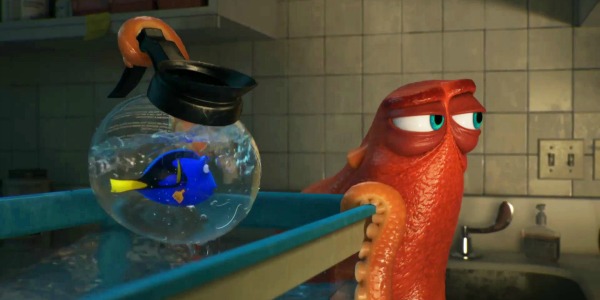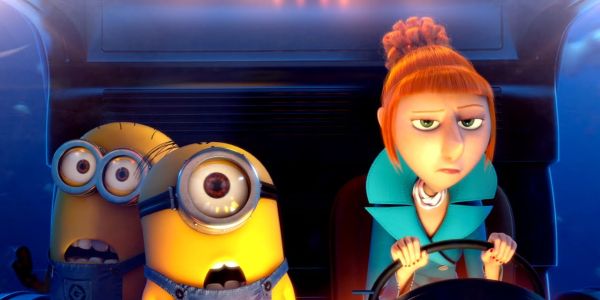Animated Sequels: Can They Really Compete?

I'm Alice. I'm a writer, blogger, film nerd, determined dreamer,…
The creative world of animation is the bread and butter of the film universe and is pretty much the cornerstone to any half-decent cinema screenings list. For most of us, animation has played an extremely primitive role in our lives – particularly during our childhood. Animated movies pave the way for us to truly master the art of escapism. Because of this, it’s easy to assume that our collection of favourite flicks will always consist of a fair few animated masterpieces, regardless of our age.
The classic artwork of Disney, Dreamworks, Illumination and a whole host of others has been entertaining families for decades, and will undoubtedly continue to take the creation of film by storm in the future.
Why Are Animated Movies So Popular?
If you’re reading this, then you’re probably an animation fan and – like a lot of us – feel a burning rage ignite inside you when they’re claimed to be just for children. The reason a lot of these films reside in our minds for a long time is because animation is a collaborative effort that produces a universal film and they tend to embody stories that everyone can relate to.
The process of making a live-action movie isn’t a walk in the park either. The first script is written and the studio gives feedback on the work, then the screenwriter begins to incorporate them into the original script, then a director is chosen and gives feedback on the script. So whilst the screenwriter gets a variety of notes from different people, it’s usually a one-man job.

With this in mind, there are no signs of slacking in the production of animation just yet because they often gross higher than most alternative live-action movies. Not only that, but audiences are becoming to grow fond of the characters created on a much wider scale than ever before; resulting in the development of entire brands. But the real question here is: do we feel the same way about animated sequels as we do the first installment?
It was announced recently that Trolls 2 will be making its way to a cinema near you after the hugely celebrated success of the first movie in 2016. It’s not difficult to understand why the making of a sequel is so tempting for production companies. The first counterpart of the picture made a tonne of money, became a global phenomenon and provided them with the all the credit – so why shouldn’t they continue the legacy?
On the other hand, it’s arguable to say that the animated sequels of the most successful animated movies are never quite up to scratch. It’s true; sequels generally do not get the same incredible response as their original films do. But why is this the case?
Does Sequel Success Exist?
There are of course a few exceptions to this generic rule, largely because of the undeniable talent of the team at the Pixar studios. Toy Story, Cars, Finding Nemo and Monsters Inc. are four films that stand out massively in a debate like this.
Toy Story may have raked in a whopping $373.6 million at the box office back in 1995, but later on in 1999, Toy Story 2 surpassed it substantially with a huge $497.4 million. This was a trend that showed no signs of slowing down either. Because in 2010 – 11 years after the second blockbuster – Toy Story 3 amazed audiences even more than the first two did; and made a massive $1.067 billion in the process.
Finding Nemo and Finding Dory are another two Pixar animated films that reflected sequel success to this level. Finding Dory made $1.028 billion in 2016, 13 years after the roaring success of Finding Nemo; which brought in a pretty hefty $940.3 million. This was again no different for Monsters Inc. and Monsters University, which made $577.4 million and $744.2 million respectively.

The lowest margin in Pixar sequel box office numbers was for Cars 2, which only made $100 million more than Cars. But still, a gain of $100 million for a sequel is still a pretty good day at the office isn’t it?
When it comes to Pixar, it’s clear that the movies were made for more than just a bit of extra profit. Pixar studios spend years planning and perfecting their characters and plot-lines, which makes for impeccable results. They are renowned for maintaining their expertise in the art of storytelling, keeping audiences of all ages engaged and sustaining raw emotion. For instance, Toy Story director, Lee Unkrich, explained that they didn’t ever want to make animated sequels on a whim. It was imperative that the audience who had related to the character of Andy as a child had the opportunity to grow alongside him and experience the third movie at a similar age to him.
Whereas a lot of sequels tend to fall into the trap of generating a new movie with the same characters for the sake of it, or to make money off an idea that was previously very successful. Pixar have always guaranteed that their creations are fresh innovations with completely new angles. Hopefully the upcoming Toy Story 4 will live up to the same expectations!
A Common Flop
It’s certainly not a rare occurrence for animated sequels to take a huge nosedive during their opening weeks at the cinema, much to the dismay of their distributors.
Even for the animation masterminds at Walt Disney Studios, animated sequels generally aren’t very notable at all. You may not even have heard of most of them because they flew under the radar so much after their release. Tarzan 2, The Fox & The Hound 2, Mulan 2, Cinderella 2, Belle’s Magical World, Return To Neverland and The Jungle Book 2 are just a few of the forgotten flops that have now been lost in time; most of which went straight from studio to video and skipped the cinema stage. The majority of them made less of an impression amongst audiences – and a lot less money!
This is something that isn’t anomalous when it comes to animated sequels, even when steering away from Disney and focusing on their main competitors – Dreamworks and Illumination.
Sometimes money isn’t everything, and there are far too many animated reminders that prompt us to remember this. If you think that the highest-grossing animated movie in history is a beloved Disney classic like The Lion King or Toy Story or Frozen, you’d be very wrong.
By a comfortable margin, the animated champion is 2004’s Shrek 2, the not particularly remembered beloved story of a flatulent ogre meeting his stuffy new in-laws. But alas, it is a sequel! It wasn’t that long ago that the Shrek franchise was an absolute monster at the box office. Worldwide, the five-part Shrek franchise — four movies, plus a Puss in Boots spin-off — has grossed a combined $3.5 billion. The next closest franchise – Ice Age – is still more than $700 million behind.
However, Critics turned on the third and fourth Shrek movies. Audiences were increasingly sick of the franchise, just three years after Shrek the Third and Shrek Forever After grossed nearly $100 million less at the domestic box office and became total washouts.
This is a pattern that unfortunately is replicated in many other animated spin-offs, and films that are faced with this issue are becoming more typical. Some more examples of this include the Kung Fu Panda franchise, the Alvin and The Chipmunks collection and the Madagascar movies.
It could be said that at the heart of the problem is the desire to continue something that needn’t be pushed any further. With Pixar, there is generally always a lot of thought and passion that delves right into the true sentiment of what an audience is looking for. This is something that a lot of other animated sequels and spin-offs fail to get right.

Sequels should only be admissible when the first film has left room for it or has given us food for thought on what might happen once it’s all over. A lot of animated films are very family friendly and therefore they tend to finish with the ideological ‘happily ever after’ style ending. If production companies can concoct an entirely new story and make something even more imaginative and entertaining than the first, it’s bound to be a triumph; like Despicable Me 2.
However, animated sequels can be awfully risky if this isn’t the case. Because whilst some animations are a huge hit, it doesn’t mean that we should be clinging to it or scraping the near-empty barrel of ideas for another one.
In a lot of cases, they should be left alone to prevent the gamble of destroying the original story. It’s true what they say: if it isn’t broken there’s no need to fix it.
Perhaps this is something that should have been adhered to when the production of a few particular animated sequels were in the pipeline.
Final Thoughts
There are several arguments to support the growing development of animated sequels, but there are also a lot of instances where sequels or follow-on films with similar themes have fallen short in comparison to their first installments.
It’s perfectly okay to adopt the attitude of ‘out with the old and in with the new’ but are we crossing the line? Should animators really be basing their decision to make a sequel just on the success of the first one?
What do you think? Do you believe that sequels are worthwhile or just money making schemes?
Sequels to note in your calendar: Despicable Me 3, Cars 3, The Incredibles 2, Toy Story 4, How To Train Your Dragon 3, Madagascar 4 & Wreck-It Ralph 2.
Does content like this matter to you?
Become a Member and support film journalism. Unlock access to all of Film Inquiry`s great articles. Join a community of like-minded readers who are passionate about cinema - get access to our private members Network, give back to independent filmmakers, and more.
I'm Alice. I'm a writer, blogger, film nerd, determined dreamer, foodie, vino inhaler and reality TV nut. I have ambitions to become a crazy dog lady in the very near future - www.welcometothelabyrinth.wordpress.com













